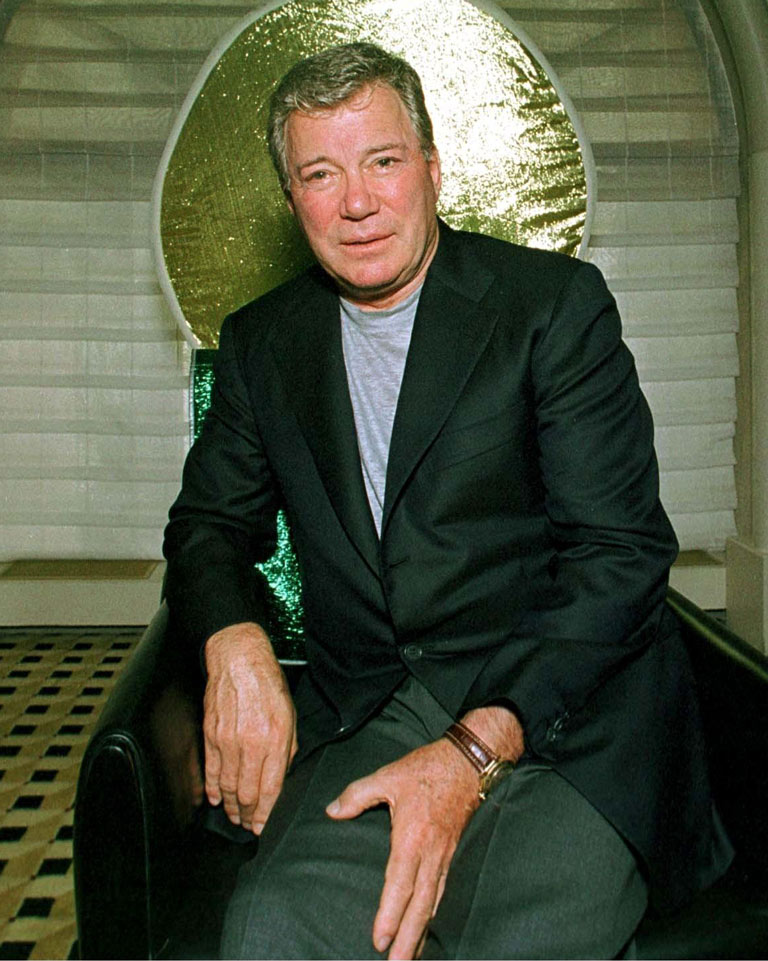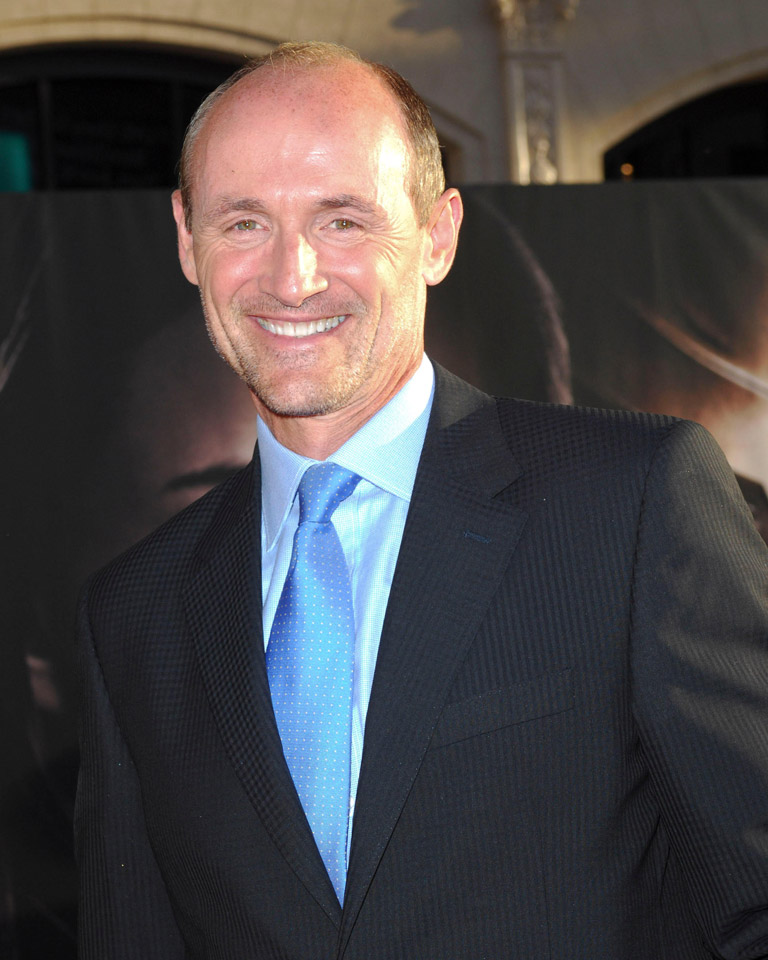Reel Men

Short’s story
Born in Hamilton on March 26, 1950
Martin Short had planned to become a physician. Instead, he graduated from McMaster University in 1972 with a degree in social work and moved to Toronto. There, alongside fellow Canadians Eugene Levy, Victor Garber and Andrea Martin, he appeared in the off- Broadway play Godspell, with Canada’s Paul Shaffer as musical director.
Going to Hollywood “wasn’t the goal at all,” says Short, who lives in Pacific Palisades, a coastal Los Angeles neighbourhood. “My plan was never to leave Toronto, where all my friends were — and I was competitive with my friends.”
He joined the comedy troupe The Second City with some of his pals, which led to the wildly popular SCTV series. He left the show in 1979 for L.A., where he starred in the sitcom The Associates, which was cancelled after just nine episodes. The city became his home base and Hollywood a part of his career, leading to memorable roles in Three Amigos and Father of the Bride. Arguably, though, Short became a star in New York, where he first appeared on the 1984-85 season of Saturday Night Live and on Broadway.
Short has a Governor General’s Performing Arts Award, a star on Canada’s Walk of Fame and a Canada Post stamp among his laurels. He currently stars in the Emmy Award-winning TV series Only Murders in the Building with longtime friend and collaborator Steve Martin. Short was made an Officer of the Order of Canada in 2019. A documentary directed by Lawrence Kasdan (The Big Chill) on Short’s life and comedy is in the works.
With 7 uniquely curated newsletters to choose from, we have something for everyone.

William Shatner
Born in Montreal on March 22, 1931
William Shatner’s acting career spans seven decades and encompasses voluminous work in both television and film, with such early screen credits as the 1961 Academy Award-winning film Judgment at Nuremberg. But the two-time Emmy Award-winning actor — best known for his role as Capt. James T. Kirk in Star Trek on the big and small screens — credits his work onstage at the now-defunct Canadian Repertory Theatre in Ottawa (and later at the Stratford Festival) with giving him the experience necessary to build a successful career in Hollywood.
“There were less people and more things to do in Canada than the crowded corridors of potential actors in the United States,” explains Los Angeles-based Shatner. “So, if you had talent, you could get a job.”
Shatner’s talent stretches to recordings (more than a dozen albums since 1968) and books (both fiction and non-fiction) — with his latest, Boldly Go: Reflections on a Life of Awe and Wonder, published in 2022. “I guess the thesis of the book is, say yes to adventure, to new things,” he says. The actor’s openness to opportunity and Kirk-like curiosity to explore new frontiers has found him appearing in movies and TV shows since the 1950s, as well as video games and commercials. “I never had a plan,” he says. “I just either did something because it interested me because I needed the money or the location seemed good.”
Getting to Hollywood was never his objective. “My goal,” he says, “was to make $100 a week.” That was about triple what he earned for five years in Canada as a struggling actor after graduating from Montreal’s McGill University in 1952 with a bachelor of commerce, “which had nothing to do with what I wanted to do. I was an actor. I’d entertained audiences from the age of six. I was on this path that I never chose but was chosen for me.”
As for legacy, Shatner believes that his would best be described as “momentary.” When he received a star on Canada’s Walk of Fame in 2000, however, Shatner was hailed for “achievements [that] extend far beyond the worlds explored by the USS Enterprise,” the original starship on Star Trek. And 11 years later, he was hailed as “one of Canada’s most celebrated cultural icons” by the Governor General’s Performing Arts Awards when he received its Lifetime Artistic Achievement Award in the Screens and Voices category.
Advertisement

Colm Feore
Born in Boston on August 22, 1958
Veteran stage and screen actor Colm Feore, who has spent most of his life in Canada, has been celebrated both here and south of the border.
An officer of the Order of Canada, Feore has won a Gemini Award for Best Actor in the 2002 CBC miniseries Trudeau, in which he played former Canadian prime minister Pierre Trudeau; a Screen Actors Guild Award for Outstanding Performance by a Cast (or Ensemble) in a Motion Picture for the 2002 musical Chicago; a Lifetime Artistic Achievement Award in the Screens and Voices category of the Governor General’s Performing Arts Awards (for which he has also served as host nine times) in 2019; and a Canadian Screen Award two years later for Best Supporting Actor for the film Sugar Daddy.
With more than 180 film and television credits, Feore is ubiquitous onscreen. City of Angels, The Insider, The Chronicles of Riddick, Changeling, The Amazing Spider-Man 2 and Thor comprise just a fraction of his filmography. On TV, he has appeared in the 2007 American Western historical film Bury My Heart at Wounded Knee; 12 episodes of 24 with fellow Canadian Kiefer Sutherland, 20 episodes of The Borgias and is part of the main cast of The Umbrella Academy with Elliot Page — yet another Canadian actor.
Feore’s significant career breaks can be traced back to his first major starring role in the 1993 film Thirty Two Short Films About Glenn Gould, a legendary Canadian. Shortly after that film was available on VHS, Feore took a handful of the tapes with him to New York and Los Angeles, which led to meetings with such filmmakers as Robert Redford, Miloš Forman, Mike Nichols and Sidney Lumet. The latter would cast Feore in his 1996 film, Night Falls on Manhattan, and in the comedy Critical Care a year later.
Yet, other than getting an apartment in L.A. while shooting 24, Feore never moved to California to be closer to Hollywood and has remained in Stratford, Ont., where he lives with his wife, theatre director Donna Feore. He would “pretend” to make plans to relocate to L.A. “I would fly in, audition for something while I was doing something else and would be asked, ‘When are you moving here?’ and I would say, ‘I have to get back and get organized, and my wife is a director, and I can’t move to Pasadena. But I’ll be back, don’t worry!’ We kept this charade going for years.”
For him, it helped that he holds dual Canadian and American citizenship, and the U.S. passport has enabled to easily criss-cross the border. But Feore quickly adds he is “a dyed-in-the-wool Canadian” and takes great pride when he sees his fellow performer compatriots, such as Eugene Levy and Martin Short, wear their Order of Canada lapel pins. Feore wears his, too, along with his Governor General’s Performing Arts Award pin.
“It’s a testament to the idea that the GGs and the orders do have an impact on telling Canadians how important and how influential and how absolutely omnipresent we are in the world of all manner of things,” he says, “not just entertainment.”
We hope you’ll help us continue to share fascinating stories about Canada’s past by making a donation to Canada’s History Society today.
We highlight our nation’s diverse past by telling stories that illuminate the people, places, and events that unite us as Canadians, and by making those stories accessible to everyone through our free online content.
We are a registered charity that depends on contributions from readers like you to share inspiring and informative stories with students and citizens of all ages — award-winning stories written by Canada’s top historians, authors, journalists, and history enthusiasts.
Any amount helps, or better yet, start a monthly donation today. Your support makes all the difference. Thank you!
Themes associated with this article
Advertisement









